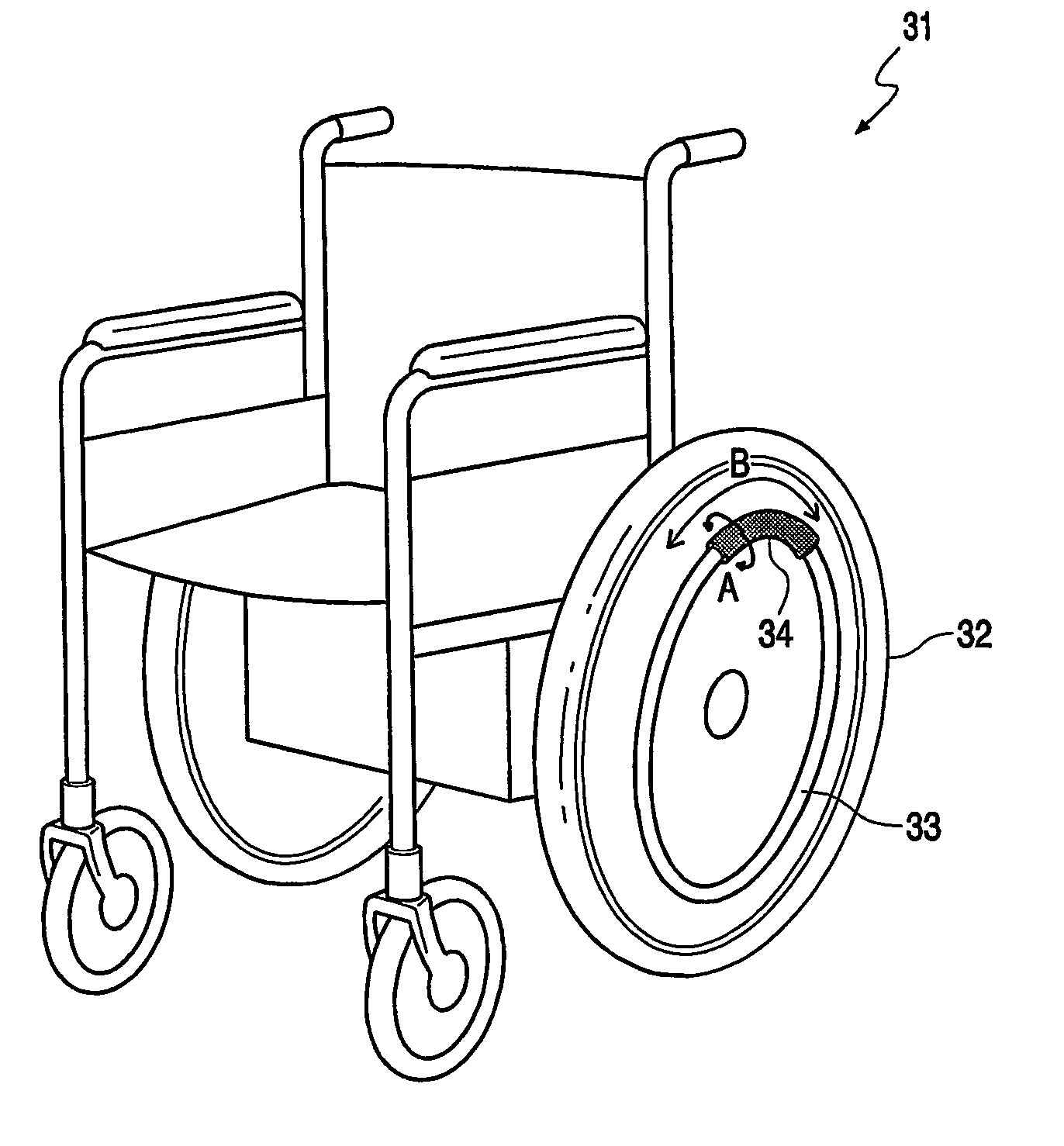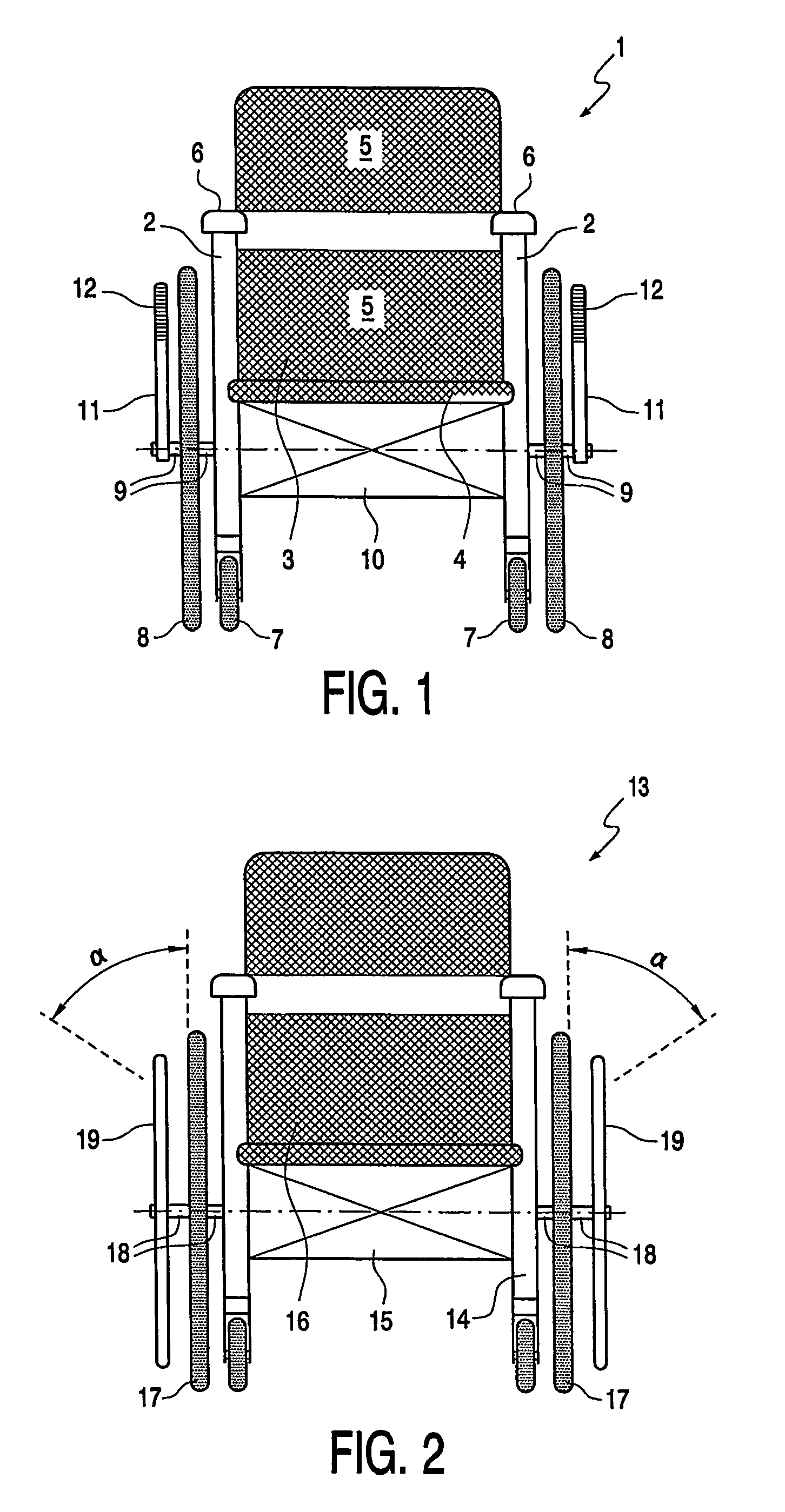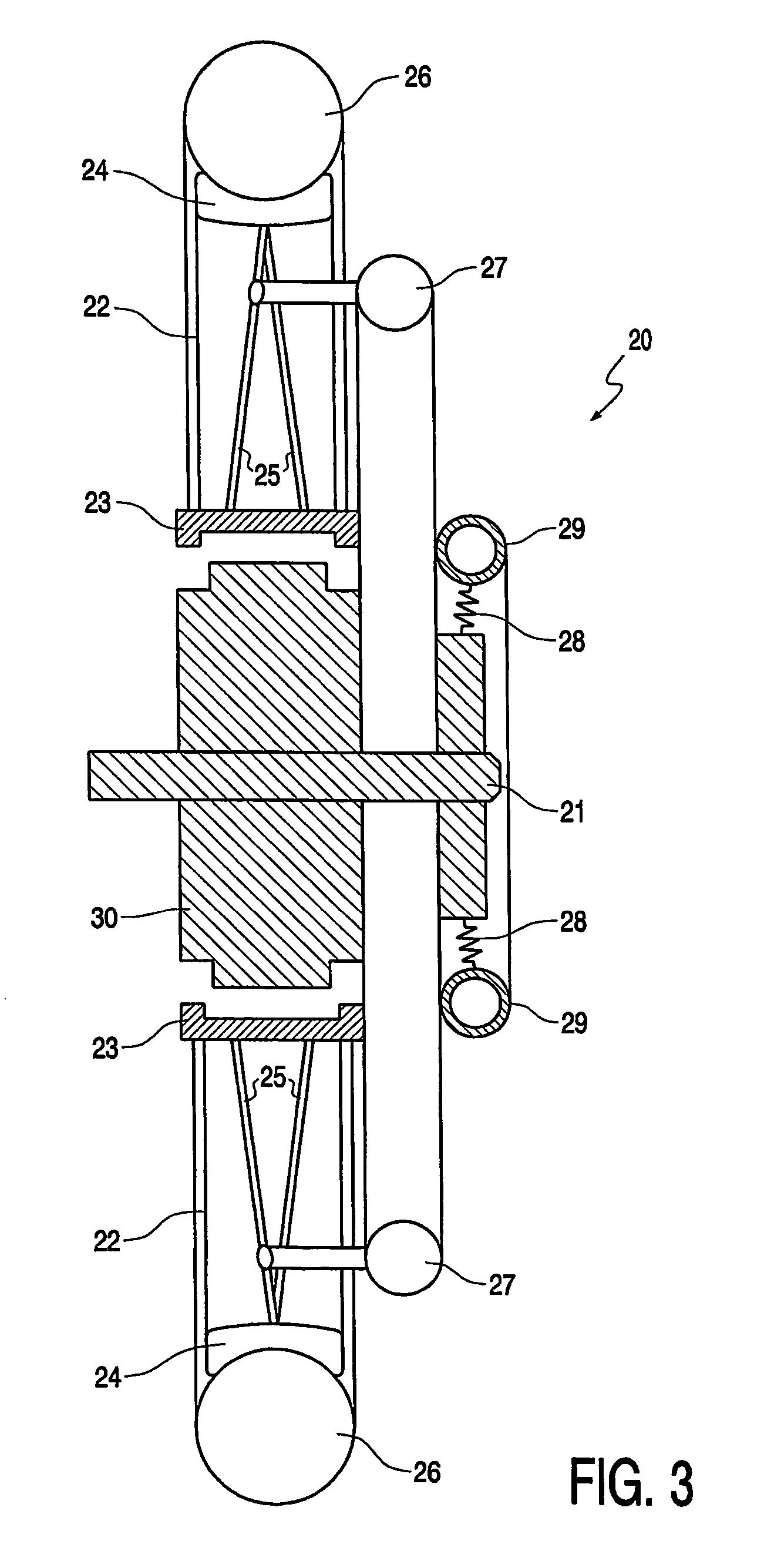Wheelchair and operating means for use in such a wheelchair
a technology for operating means and wheelchairs, which is applied in the field of wheelchairs, can solve the problems of considerable back or arm problems, and user's relatively difficult operation of wheelchairs, and achieve the effects of simple and light operation, reduced fatigue and/or physical problems, and relatively easy positioning of operating means to the side of the wheelchair uni
- Summary
- Abstract
- Description
- Claims
- Application Information
AI Technical Summary
Benefits of technology
Problems solved by technology
Method used
Image
Examples
Embodiment Construction
[0020]FIG. 1 shows a front view of a first preferred embodiment of a wheelchair 1 according to the invention. Wheelchair 1 comprises a frame 2 and a chair unit 3 connected to the frame. Chair unit 3 is herein provided with a seat 4, two back supports 5 and two armrests 6. The frame is connected to two small swivel wheels 7, which swivel wheels 7 are rotatable about a horizontal axis and a vertical axis. The frame is also connected to two drive wheels 8 positioned adjacently of chair unit 3. Drive wheels 8 are coupled by means of a wheel shaft 9 to a motor unit 10 for motorized driving of drive wheels 8. Motor unit 10 can herein be operated by means of two operating handles 11 connected pivotally to wheel shaft 9. In a situation of rest the operating handles 11 protrude in a substantially vertical direction relative to wheel shaft 9. Operating handles 11 are here oriented such that a user of wheelchair 1 can reach and pivot the operating handles 11 relatively easily from a natural po...
PUM
 Login to View More
Login to View More Abstract
Description
Claims
Application Information
 Login to View More
Login to View More - R&D
- Intellectual Property
- Life Sciences
- Materials
- Tech Scout
- Unparalleled Data Quality
- Higher Quality Content
- 60% Fewer Hallucinations
Browse by: Latest US Patents, China's latest patents, Technical Efficacy Thesaurus, Application Domain, Technology Topic, Popular Technical Reports.
© 2025 PatSnap. All rights reserved.Legal|Privacy policy|Modern Slavery Act Transparency Statement|Sitemap|About US| Contact US: help@patsnap.com



